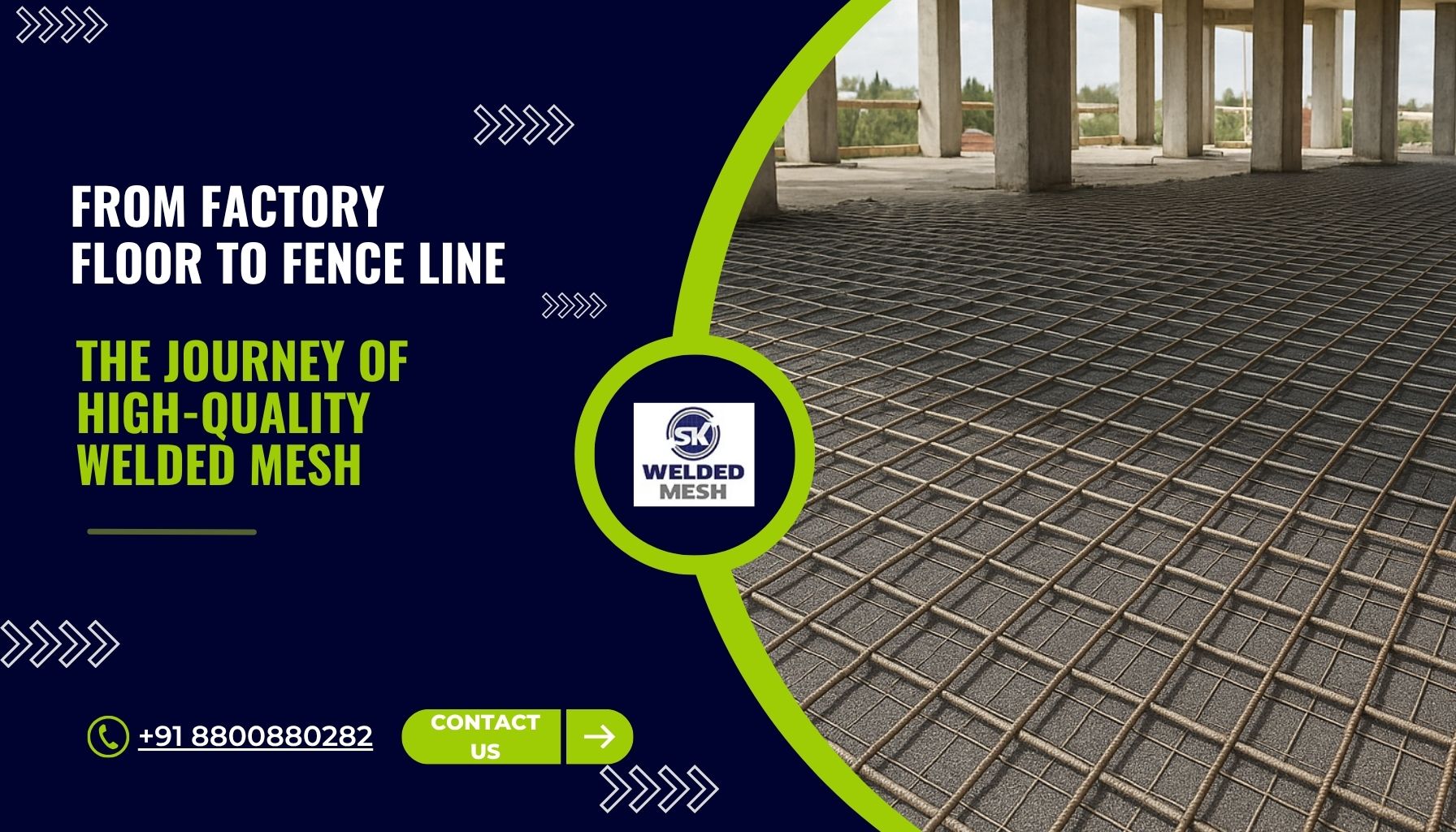

Most people only see the welded mesh when it’s already in place. Fixed between posts. Stretched across fields. Buried in concrete. But its real story begins long before that.
If you’re sourcing for an industrial project, a boundary wall, or a public utility, you know quality depends on more than just specs.
It comes down to what happens in the background—inside the plant, on the machines, and through every hand that touches the product before it leaves the yard.
Quality mesh begins with uniform wire. Every roll that feeds into the line is already inspected for gauge, tensile strength, and finish.
Galvanized wire is common for outdoor use.
For structural work, mild steel might be more common. Some jobs call for PVC coating.
The plant doesn’t wait till the end to test. The checking starts before the first weld is even made. This way, you get mesh with wires that align straight, bond strong, and stretch without warping.
Welding is where the product takes shape.
Machines place wires in exact alignment and use electric resistance to fuse them at every crossing. No adhesives. No hooks. Just clean, consistent welds.
Each weld point holds firm under tension, so when pressure hits later—during installation or under load—the mesh doesn’t tear.
This part of the process is what gives the mesh its grid stability, whether it’s going under asphalt or lining a periphery.
After welding, panels or rolls are trimmed down. Dimensions matter, especially when you’re working with pre-fab frameworks or needing tight overlaps.
Mesh that’s even a few millimeters off can cause delays or waste at site.
Good suppliers don’t cut corners here. They measure every few units to stay within tolerance. That means what you receive on site is consistent with what you approved on paper.
Coating makes the mesh last. Galvanization protects against corrosion. Powder coating adds color and extends service life.
Some meshes get dual treatment—galvanized first, then polymer-coated. The application needs to be even. Too thin and the mesh won’t hold up outdoors. Too thick and it can mask flaws.
Plants that handle this in-house usually maintain better finish control. You’ll notice the difference months down the line—especially on jobs exposed to heat, rain, or salt.
Good mesh can still get damaged on the way to you. That’s why packing matters. Welded Mesh is either bundled in rolls or stacked as panels, with corner protection and shrink-wrap.
Labels include batch details, so if you ever need more, the supplier can trace the original run.
Some exporters add QR tags or barcodes to simplify tracking during customs or unloading. These little touches reduce confusion on large sites where multiple materials land at once.
Strong mesh is more than steel and welds. It’s the result of small steps done right—from wire selection to how it gets strapped onto the truck.
That’s something we care deeply about in our work at SK Welded Mesh.
Our teams focus on manufacturing welded mesh that shows up ready—built to hold shape, fit spec, and stand up over time. If that’s what your next job needs, we’d be glad to talk.